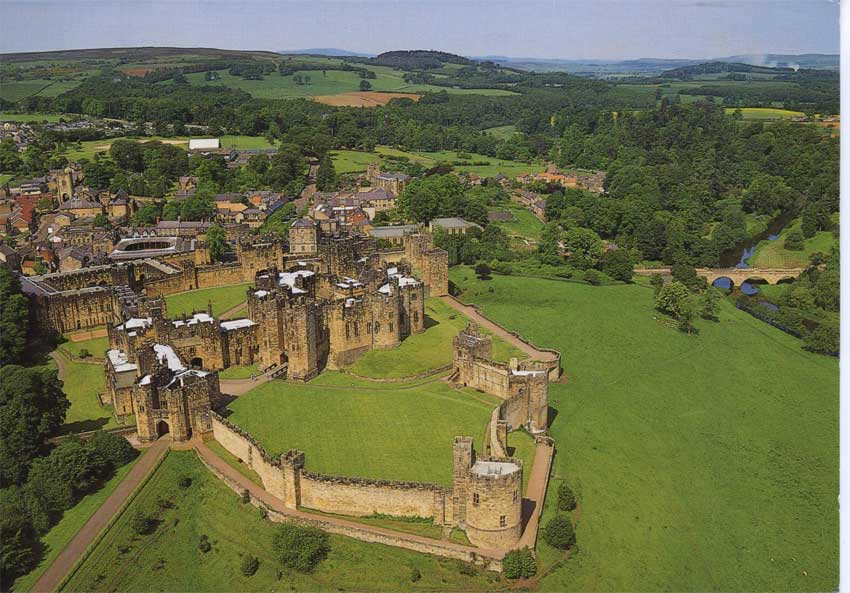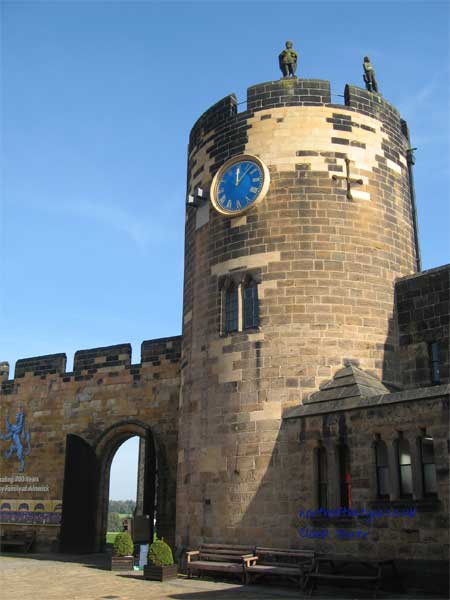On September 5th the very same year, the foundation stone was laid and the real construction had begun. Despite its medieval look, the last building techniques, material and innovations were used in the construction of Neuschwanstein Castle. The foundations were cemented and the walls were built of brick with light-colored limestone used merely as cladding.
First stages of construction
As one can imagine, building a castle on a rocky location such as this, is quite hard. Despite the modern building techniques, the construction process was difficult and complicated. Even though it was built rather quickly compared to other great castles, it was not built as rapidly as the founder of the castle - Ludwig II - had hoped.Neuschwanstein Castle consists of the gatehouse which one walks through when entering, the Knights House with a square tower to the right and a citadel in front of the courtyard. The first building which was completed was the gateway building in 1872. This building was used as a provisional living quarter Ludwig II when he visited the site, until the main citadel had been built.
Final stages
The construction of the citadel started in 1872 and was finished twelve years later in 1884, though without all the final details completed. By that time, Ludwig moved in to the castle and lived there permanently. The whole castle as such stood ready 1892; which totals a construction time of 24 years.The effect of this white, fairy-tale castle with its beautiful location is simply amazing. Unfortunately, the man who dedicated his life and a fortune on the project, Ludwig II, never got the see the castle completed, as he died in 1886.
The man behind it
So, who was this man, who had such a masterpiece of a castle constructed and what were his motives? The story behind Ludwig II is almost as intriguing and romanticized as the castle itself.Ludwig was the oldest son of Crown Prince Maximilian II of Bavaria. He lived a typical life of a young royal, with a strict regimen of study and exercise and rather harsh relations to his father and mother. Ludwig spent much of his time at Castle Hohenschwangau, the former ruined castle of Schwanstein, which his father had rebuilt in a gothic style.
Hohenschwangau” means in a strict translation “The upper land of the Swans” and the castle was decorated with scenes from medieval legends and poetry, including the legend of the swan knight Lohengrin. The swan was also the heraldic animal of the Knights of Schwangau, whose successor the Maximilian II considered himself to be.
Ludwig’s dreamscape
Ludwig had already as a child vivid imagination and he identified himself with Lohengrin, both as a real swan knight and as the fictitious knight Lohengrin. The young Ludwig was also influenced by the romantic mountain scenery and the Hohenschwangau castle became one of his favorite places to stay. It was a place for him to escape the strict and limited reality.Ludwig soon became an admirer of Richard Wagner, a German composer and theatre director. Wagner had a very classic and romantic way of doing operas. Ludwig was introduced to Wagner's "Lohengrin" on 2 February 1861 in the Munich Court Opera House and he was captivated.
At the age of 18, Ludwig became Ludwig II as he took over the throne after his father who had died in a three-day illness. At that time, one of the very first orders he gave was to summon Richard Wagner to his court. There Ludwig II rescued the composer from a financial crisis which helped him to create new operas.
A devastating blow
Soon after the death of his father, Ludwig II suffered a severe personal blow. As the region of Bavaria was allied with Austria, who in 1866 lost the war against the expanding Prussia, Bavaria was forced into an alliance with Prussia which removed the Ludwig’s right to dispose over his own army in case of war. This meant that Ludwig II no longer was the sovereign ruler, simply a vassal of the Prussian ruler. One year later, he began planning for a kingdom and castle of his own, where he could be a real king once again.A castle of his own
This castle would be named “New Hohenschwangau Castle” and would be a better recreation of the ideal medieval castle compared to his fathers. Perfection was the key with a mixture of original style and modern technical features. The main architecture of the castle was drawn, not by a professional architect, but by the theatrical set designer Christian Jank. This further shows how fascinated Ludwig II was by sagas and fantasies and what his motives for the castle were. Through out the castle, its design pays homage to the German legend of Lohengrin, the Swan Knight.A new world
As the construction of castle progressed, Ludwig alienated himself from people and spent more and more time in the mountains and less time in Munich as he drifted into his fantasy world. Ludwig II increasingly identified himself with Parzival, a legendary medieval figure who became the Grail King through his purity and faith.Ludwig was so intrigued that he asked Wagner to write an opera about it, which he did in 1877. Wagner and his circle privately even referred to Ludwig as "Parsifal", and his problems were incorporated into the drama of the Grail. This opera was then played exclusively several times for Ludwig.
During this stage, Ludwig started to redesign many of the castle rooms. For example, the "Writing Room" was changed into a small grotto. The modest "Audience Room" became a huge Throne Room. The room was no longer intended for giving audiences, but was built as a monument to kingship and a copy of the legendary Grail hall. A massive Knights Keep was planned for the middle of the upper courtyard but was never built; only the foundation for the keep which is still visible.
Reality catches up
However, Ludwig’s behavior was in the long run not compatible with his duties as a head of state. Reality was knocking on Ludwig’s door 1885 as foreign banks threatened to seize his property due to his overwhelming depts. The construction of the castle had cost him a fortune.When Ludwig refused to react rationally, he was declared insane by the government, and interned in Berg Palace. The next day he was found drowned under mysterious circumstances in Lake Starnberg, together with the same psychiatrist who had certified him as insane.



















